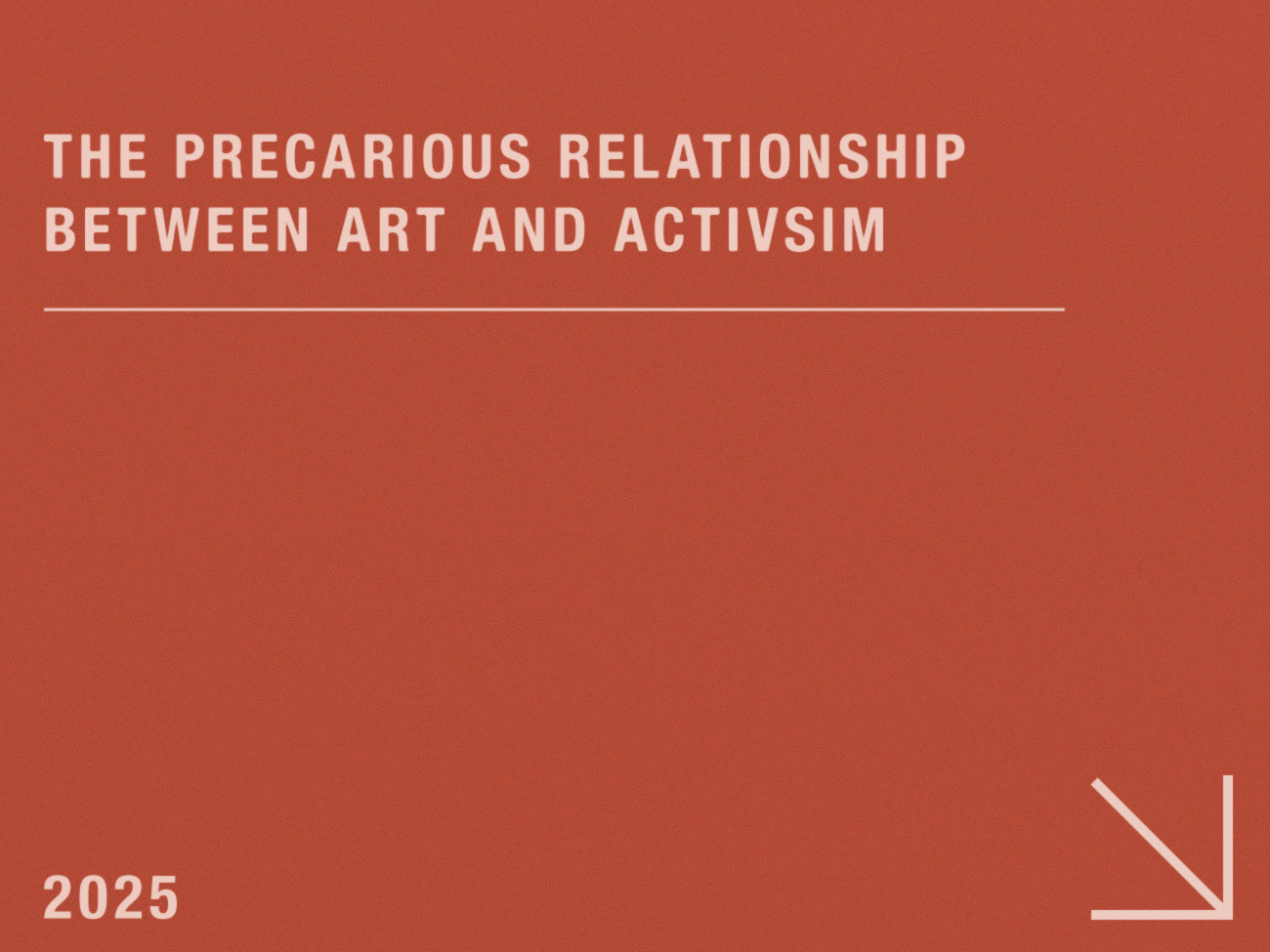In an age saturated with photography, film and digital content—and after a century of compelling developments in abstraction and conceptualism—the choice to engage in figurative painting is no longer self-evident. The canon has led us to an acute cultural awareness of the optionality of representation.
Of course, there is a long-standing tradition of figurative painting, and many artists still find inherent value in engaging with that legacy. When push comes to shove, I may be considered more of a traditionalist myself. I love history, and the idea of cultural formation as a continuum—mutating steadily from one generation to the next. But even when artists choose to engage with representation, a critical question remains: what do you paint—and why—given the specific conditions of your own life?
While there may be as many answers to these questions as there are artworks, I think it’s fair to say that some solutions are more compelling than others.
One thing that stands out in historical painting—particularly when you look at subject matter—is how novelty changes over time. What was once new, or fashionable or provocative becomes dated, quaint, or emblematic of a specific era. Novelty fades with exposure. And as it does, certain qualities also fall away, while others persist or emerge with new resonance. I believe this has important implications when it comes to the selection of subject matter.
When practicing street photography, I sometimes come across moments that are almost begging to be photographed for their immediacy: a man with three parrots, a dog with an expressive face, someone caught in an unusual shaft of light. These visual one-liners can be striking or even charming, but rarely hold attention or invite return.
Painting, by contrast, demands duration on a practical level. The process necessarily involves sitting with an image for hours a day, over weeks, or sometimes months. You become familiar with the subject, and with the image itself. If the painting lacks deeper structure—if it lacks formal, perceptual, or compositional complexity—it quickly becomes tedious. Sometimes, it’s the most unassuming moments that, for reasons difficult to articulate, continue to linger in the mind.
That said, many artworks also deploy common elements of novelty, such as shock, timeliness or cleverness—with a lasting effect. Consider Merry Alpern’s Dirty Windows shot through a hazy bathroom window overlooking an illicit Wall Street-area sex club. Or Masahisa Fukase’s Solitude of Ravens (Karasu) with its stark almost hallucinatory images of karasu drifting through the bleak, snow laden landscapes. Or William Klein’s Tokyo 1961, capturing portraits of a young Shinohara Ushio, amid Japan’s explosive postwar turbulence.
I still remember the electric jolt of first encountering these photographs. But the images also endure because their surface impact is underpinned by cultural, symbolic and psychological weight—a weight that is accessed or generated through form and process. Subversion of expectation, dynamism, immediacy become tools in service of a deeper, complex network of resonance. Novelty is almost incidental—or perhaps it is what triggers the initial intuition but never the end point. The images resonate, because they reveal something of themselves slowly and repeatedly over time.
So what is this resonance?
Once I learned this truth, I began to see examples of it everywhere. A picture hung on the wall of our parlor. In it, a woman was taking a shirt from a clothesline. She had clothespins in her teeth and it was windy and a boy was tugging at her dress. The woman looked like she was in a hurry and the whole scene gave me the idea that, just outside the frame, full, dark clouds were gathering. But that was not what it was. It was paint. So I decided right then and there to see the picture as it really was. I stared at the thing long and hard, trying to only see the paint. But it was no use. All my eyes would allow me to see was the lie. In fact, the longer I gazed at the paint, the more false detail I began to imagine. The boy was crying, as if afraid, and the woman was weaker than I had first believed. I finally gave up. I understood then that it takes a powerful imagination to see a thing for what it really is.”— Norm MacDonald
I consider this a beautiful articulation of resonance by Norm—unexpectedly found in his shaggy-dog-story of a book. But what’s most striking to me is how this passage folds three interwoven insights into a deceptively simple reflection. First, is Norm's awareness of what might be called an epistemological filter: the recognition that perception is a kind of construction. He intuits a disjunction between the reality as it is, and the “lies” his mind imposes on it. The second is his unusual characterisation of a "powerful imagination.” He reverses the common characterisation of imagination as force of invention and fantasy, by suggesting that it can be the precise counterforce—an effort of discipline and restraint that seeks to see clearly, and resist illusion. But perhaps the most telling insight is embedded in the brief, and riddling confession: “I finally gave up.”
Norm’s idea of “the lie” maps cleanly onto one of the oldest critiques of representation in Western thought: Plato’s theory of mimēsis. In Republic X, Plato describes a hierarchy of truth. At the top is an ideal world of Forms (e.g., the ideal bed) that exists beyond the physical world. Physical objects like the carpenter’s bed, are imperfect copies of those Forms. And Art—a painting of a bed—is a copy of a copy, even further removed from the truth. For Plato, these layers of imitation (mimēsis) were deceptive, emotionally seductive, and morally corrosive. He distrusted art precisely because it appeals to illusions rather than reason. This suspicion still circulates today in secular aesthetic form. Many contemporary artists and critics assert that art has “moved beyond” mimēsis, and representational work is indeed naïve or regressive. In contrast, abstraction or conceptualism are often seen as more honest, dealing more directly with the medium (paint as paint, canvas as surface), and exposing the act of perception itself. To reframe Plato’s theory in modern scientific terms, we might say that Plato’s Forms are akin to a perfect mathematical model of the world, whereas mimētic art is a poetic rendering based on our faulty perceptions. A painting of the leaves rustling in the wind might stir emotion, but a physicist analysing the same gust might uncover the mechanisms of turbulence or plant evolution.
Yet Plato’s own student, Aristotle, took a radically different view. Rather than seeing mimēsis as deception he saw it as fundamental to human cognition and learning. In Metaphysics I. 1 he writes:
“Human’s differ from other animals in that they are the most mimētic and learn their first lessons through mimēsis.”
For Aristotle, mimēsis had several critical functions: it was a tool for learning, a vehicle for emotional persuasion in rhetoric and a central mechanism in ethical development and moral formation. In tragedy it allowed for catharsis—the purging or purification of pity and fear—by enabling viewers to process intense emotions at a safe aesthetic distance. He recognised a basic human pleasure in recognition—we are drawn to representations, even of unpleasant things, because we delight in the act of deciphering and mentally reconstructing reality through form. Whether in literature, theatre, music or visual art, mimēsis was not just a deception, but a cognitive and emotional gateway integral to how humans understand themselves and the world.
There is a significant overlap with Aristotle's mimēsis and the modern concept of empathy. When we watch a tragedy or engage with a story, we imaginatively imitate the emotional and ethical situations of the characters. We don't just observe; we simulate the feelings, dilemmas, and suffering internally, the way that Norm recognised the psychological weight of the characters in a painting. These mimetic experiences can be a critical tool for the formation of character. The inability to see a painting for what it is physically (paint on a surface)—and the inability to resist emotions or narrative is—in and of itself, indicative of a basic human reality.
So where do these opposing views leave us?
Perhaps we can turn to Plato’s elusive mentor: Socrates. Unlike Plato’s metaphysical certainties, or Aristotle’s empirical curiosity, Socrates gave us the method of questioning—the dialectical approach (elenchus), which sought not to establish truth but to refute error. A person would offer a definition (say, of justice), and Socrates would test it through questions. If contradictions appeared, the definition was discarded. The goal was not to arrive at truth, but to clear away falsehood.
In this, Socrates anticipated modern scientific thinking—especially Karl Popper’s falsifiability principle. Truth becomes something that survives confrontation, not something we assert with confidence. Fact is always provisional.
(to be continued...)

